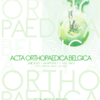The prevalence of frozen shoulder in patients with limited Dupuytren disease
Dupuytren disease; frozen shoulder syndrome
Published online: Aug 23 2022
Abstract
Evidence from the literature suggests an association between Dupuytren disease and frozen shoulder syndrome, both clinically and histologically. An increased tendency for fibrotic healing after repetitive microtrauma could be an underlying mechanism. However, it remains unclear how strong this associa- tion is and if only mild signs of Dupuytren disease would also increase the risk of frozen shoulder. In 61 patients, we examined the hands for signs of Dupuytren disease and the shoulders for pain and limited motion. We found a 21,7% prevalence of frozen shoulder syndrome in patients with signs of Dupuytren disease versus 13,9% in those without. The other way around, in patients with frozen shoulder syndrome the prevalence of Dupuytren disease was 50% versus 36.7% in those without frozen shoulder syndrome. These differences were not statistically significant, contrary to similar research in the literature. However, methodological issues, especially the choice of control group, may explain the differences between our findings and previous studies. We conclude that the clinical association between Dupuytren disease may not be so strong as previously thought, especially in patients with only limited signs of the disease.
